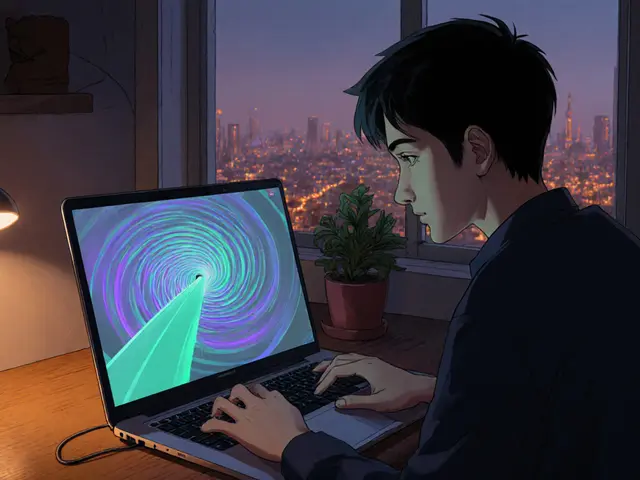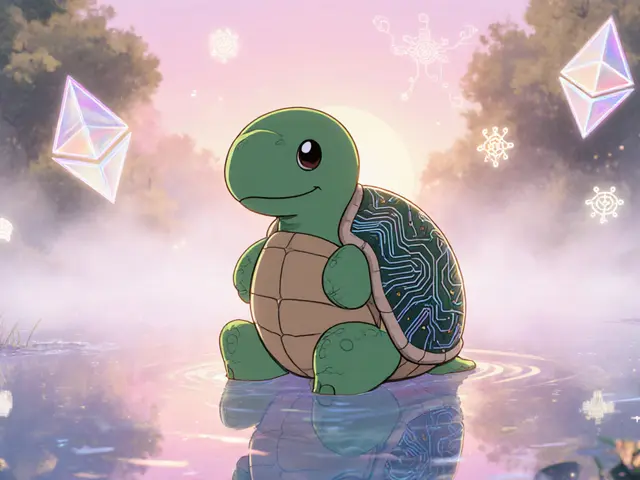Direct-to-Fan NFTs: The New Way Artists Connect with Supporters
When working with direct-to-fan NFTs, digital tokens that let creators sell unique collectibles straight to their audience without a middleman. Also known as artist‑to‑fan tokens, they combine ownership rights with direct revenue, giving fans a stake in the creator's success.
These tokens are a special kind of Non‑fungible Token (NFT), a blockchain‑based asset that cannot be exchanged on a one‑to‑one basis because each item has distinct data. By leveraging NFTs, artists can guarantee scarcity, provenance, and verifiable ownership, which are the core reasons collectors pay a premium. The NFT framework also opens the door to new experiences, like gifting exclusive content or unlocking backstage access.
One powerful distribution method is the airdrop, a free giveaway of tokens to a targeted group of users. Airdrops let creators reward early supporters, spark buzz, and grow a community without demanding an upfront purchase. When paired with direct‑to‑fan NFTs, an airdrop can act as a teaser, giving fans a taste of the upcoming collectible and encouraging them to buy the full version later.
Another trend fueling fan engagement is play‑to‑earn, game mechanics that reward players with cryptocurrency or NFTs for completing in‑game actions. Artists can embed mini‑games into their NFT releases, letting fans earn bonus artwork or exclusive rights simply by playing. This blend turns passive collectors into active participants, boosting loyalty and creating a steady stream of user‑generated promotion.
Why Direct‑to‑Fan NFTs Matter
Direct‑to‑fan NFTs bridge the gap between creator and audience, removing the need for galleries, record labels, or marketplaces that take a large cut. The model shifts revenue directly into the artist’s wallet, often within minutes of a sale. It also opens up fractional ownership opportunities, where fans can buy a share of a high‑value piece, lowering the entry barrier and increasing liquidity. This democratizes art collecting and mirrors the way stock crowdfunding works, but with a transparent, immutable ledger.
From a technical side, these tokens rely on popular blockchains like Ethereum, Polygon, or Solana, each offering different trade‑offs in speed, cost, and environmental impact. Choosing the right chain affects the fan experience: low gas fees keep small‑scale buyers happy, while high security ensures the rarity claim holds up over time. Many creators also layer smart contracts that automatically distribute royalties on each secondary sale, turning every resale into a new revenue stream.
Community building is another strong point. Direct‑to‑fan NFTs often come with private Discord channels, exclusive livestreams, or early‑access drops. By tying token ownership to these perks, artists create a sense of belonging that conventional merch can’t match. The result is a self‑sustaining ecosystem where fans are both customers and promoters.
Looking ahead, we see more hybrid models where NFTs combine physical goods with digital twins, and where metaverse platforms host virtual concerts that require a direct‑to‑fan NFT ticket. The flexibility of the technology means the possibilities keep expanding, and creators who experiment early can set the standards for the next wave of fan‑first experiences.
Below you’ll find a curated list of articles that dive deeper into each of these angles – from how airdrops boost launch momentum to case studies on play‑to‑earn NFTs, plus practical guides on choosing the right blockchain and setting up royalty splits. Explore the collection to see how you can start turning your own fan base into a community of owners.
27
Music NFTs: Boosting Direct Fan Engagement for Artists
Explore how music NFTs let artists sell unique digital assets, earn higher revenue, and create exclusive fan experiences through platforms, royalties, and DAO governance.
Latest Posts
Popular Posts
-
 What is Privix New (PRIVIX) Crypto Coin? Facts, Price, and Risks in 2025
What is Privix New (PRIVIX) Crypto Coin? Facts, Price, and Risks in 2025
-
 What is Bitgert (BRISE) crypto coin? Full breakdown of the blockchain, tokenomics, and real-world performance
What is Bitgert (BRISE) crypto coin? Full breakdown of the blockchain, tokenomics, and real-world performance
-
 Xena Exchange Crypto Exchange Review: Professional Tools vs. Regulatory Risks
Xena Exchange Crypto Exchange Review: Professional Tools vs. Regulatory Risks
-
 What is LUXO (LUXO) crypto coin? The truth about the luxury authentication token
What is LUXO (LUXO) crypto coin? The truth about the luxury authentication token
-
 What Is Collateralization in DeFi? A Clear Guide to How It Works and Why It Matters
What Is Collateralization in DeFi? A Clear Guide to How It Works and Why It Matters
Tags
- crypto exchange
- cryptocurrency
- crypto exchange review
- meme cryptocurrency
- blockchain
- cryptocurrency compliance
- Binance Smart Chain
- CoinMarketCap airdrop
- underground crypto Nepal
- crypto airdrop guide
- crypto staking
- Bitcoin mining Iran
- airdrop
- Ethereum staking
- GENIUS Act
- liquid staking
- cryptocurrency exchange security
- crypto
- crypto airdrop
- crypto regulations



